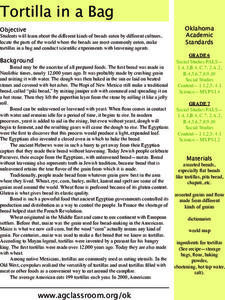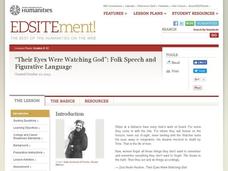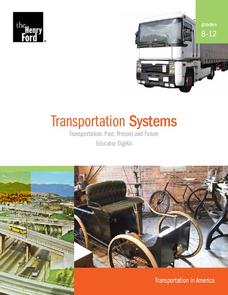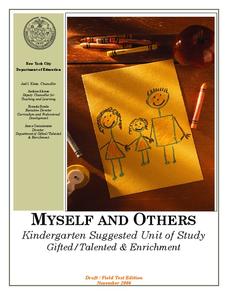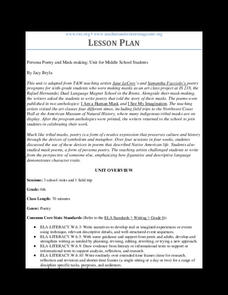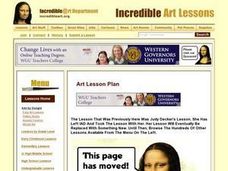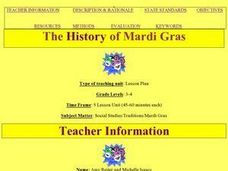Curated OER
The Twelve Core Values of the Inupiaq People - How do they fit in your life?
Students become familiar with the Inupiaq culture. In this Inupiaq lesson, students listen to read alouds about the life style of the Inupiaq in Alaska, Students understand the twelve core values of the Inupiaq people. Students choose a...
Curated OER
Tortilla in a Bag
An engaging, and interesting lesson of types of bread found around the world awaits your charges. In it, learners compare and contrast manjy types of breads that come from cultures all over the globe. They utilize worksheets embedded in...
Curated OER
Cyberspace Safari
Middle schoolers go on an information gathering hunt on the Internet to study West African empires. They work in teams; meteorologists, bankers, writers, and archaeologists. They collect data on all sorts of topics related to West...
Curated OER
"Their Eyes Were Watching God": Folk Speech and Figurative Language
Using or considering using Zora Neale Hurston's Their Eyes Were Watching God? Then this packet is a must for your curriculum library. The examination of how Hurston combines folklore and folk language to create the voice of her...
Curated OER
Exploring Arthurian Legend
Learners investigate the evolution of the King Arthur stories and analyze them as a window into the culture that preserved them. They trace the legends through their earliest versions through medieval and Victorian times and into the...
Curated OER
Australian Aboriginal Art And Storytelling
Students explore Aboriginal storytelling traditions through the spoken word and through visual culture. They listen to stories of the Dreamtime told by the Aboriginal people and investigate Aboriginal storytelling in contemporary dot...
Curated OER
"If You Are What You Eat, Then What Am I?"
Geeta Kothari presents an honest and compelling account of trying to assimilate into American culture. After your class reads her short story "If You Are What You Eat, Then What Am I?," present your scholars with this two-page analysis...
Curated OER
Homeschooling through the Holidays
Use your unique flexibility to help your family explore the holiday traditions of various cultures.
Henry Ford Museum
Transportation Systems
Learners analyze the evolution of cultural attitudes through the lens of transportation, examining several artifacts, documents, and photographs. Topics covered include how American attitudes have influenced society's evolution into a...
Curated OER
Journey to Japan: An Elementary Geography Standards-Based Unit on Japan
Second graders compare and contrast Japanese customs and culture to those of Americans through research in this year long study. They determine the basic needs of all people in spite of cultural differences.
Curated OER
Legends of the Fifth
Students explore the the legends and myths of the Orient, Africa, Europe, Asia, and the Americas in this six lessons unit. Different cultures and belief systems of the inhabitants of these areas are examined through storytelling techniques.
New York City Department of Education
Myself and Others
Self reflection is an important skill to reinforce in our children, and it's especially helpful to help them realize who they are in the context of their environment. A collection of lessons about self image and community encourage...
Curriculum Corner
Australian Christmas
Where is Australia? How is an Australian Christmas from other Christmases around the world? Learners participate in a mini-research project where they discover what an Australian Christmas is like.
Museum of New Zealand Te Papa Tongarewa
Te Reo Maori Activity Book
Introduce young explorers to the language of New Zealand's Maori with an activity book that includes word searches, fill-in-the-blank activities with Maori words, and prompts to illustrate native New Zealand birds.
Curated OER
Japanese Poetry: Tanka? You're Welcome!
Students explore tanka, a form of Japanese poetry. They read and analyze tankas to determine the structure and intent, and compose a traditional and a non-traditional tanka.
Teachers & Writers Magazine
Persona Poetry and Mask-Making
Looking to engage scholars in poetry with hands-on activities? What better way than making masks? Readers analyze literary devices in poetry, examine Native American masks, create their own masks, and then write poems to tell its story!
Curated OER
African Ceramic Portrait Vessel
Students create a piece of art inspired by traditional African pieces.
Richmond
Chinese New Year – Reading Comprehension
Traditions surrounding the celebration of the Chinese New Year are the focus of a reading comprehension worksheet designed for intermediate level language learners.
ABCya
Hanukkah Gelt Hunt
A Hanukkah-themed learning game challenges players to find hidden gelt. Scholars examine festive pictures to locate hard-to-see gelt—chocolate coins— and click on them to earn points before the timer runs out. Levels become increasingly...
Digital Public Library of America
Their Eyes Were Watching God by Zora Neale Hurston
Zora Neale Hurston's novel Their eyes Were Watching God has been highly praised and severely criticized for its depiction of African American folk culture. A set of primary source materials, including photographs, articles, essays, and...
K20 LEARN
It Wasn't Me: "The Crucible"
Scholars complete their study of the collective fear in Arthur Miller's "The Crucible" by conducting a mock trial to determine how many witches are in the class. Groups then analyze sections of the play for the literary devices used and...
Curated OER
Family Tradition And History
Second graders investigate personal family traditions with objects brought to class that represent personal history. The objects are shared with the class during sharing time. The goal of the lesson is that students would recognize there...
Curated OER
The History of Mardi Gras
Students gain knowledge about the history, traditions, and culture of Mardi Gras. They then apply the content to make related projects and complete assignments.
Curated OER
Social Studies: Kyrgyzstan Bride Kidnappings
Students examine the Kyrgyzstan bride kidnappings and compare wedding traditions there with those in the United States. They explain these differences and similarities in a fictitious letter to a peer in Kyrgyzstan.



